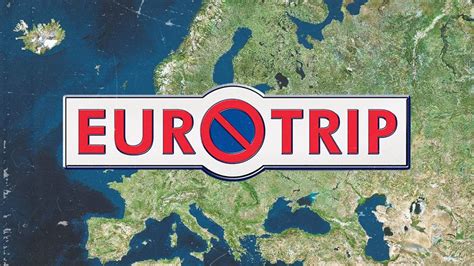Eurotrick Explained Simply

The Eurotrick, a financial maneuver that garnered significant attention in the early 2000s, refers to a complex series of transactions and financial engineering techniques employed by certain European countries to circumvent the strict fiscal criteria set by the European Union (EU) for joining the eurozone. At its core, the Eurotrick involved the use of financial derivatives and other sophisticated financial instruments to temporarily reduce a country's reported debt and deficit levels, thus artificially meeting the Maastricht criteria.
These criteria, named after the Maastricht Treaty signed in 1992, required member states to maintain a budget deficit of less than 3% of their GDP and a public debt level below 60% of GDP to qualify for the adoption of the euro. The Eurotrick was essentially a way for countries to mask their true fiscal positions, allowing them to qualify for eurozone membership despite not fully meeting these criteria.
Key Points
- The Eurotrick involved complex financial transactions to reduce reported debt and deficit levels.
- It was used to meet the Maastricht criteria for joining the eurozone.
- The technique was controversial, as it allowed countries to bypass the fiscal discipline intended by the EU.
- Italy and Greece were among the countries that employed such financial engineering techniques.
- The long-term sustainability of these financial maneuvers has been questioned, given their potential to obscure true economic health.
Understanding the Maastricht Criteria

The Maastricht criteria were established to ensure that countries joining the eurozone had sound public finances and could maintain economic stability within the monetary union. The criteria include:
- A budget deficit of less than 3% of GDP.
- A public debt level of less than 60% of GDP.
- Low inflation, close to the average of the three lowest-inflation EU member states.
- Long-term interest rates close to the EU average.
- Stability of the exchange rate, with the currency having been within the normal fluctuation margins of the European Exchange Rate Mechanism (ERM II) for at least two years without severe tensions.
How the Eurotrick Worked
The Eurotrick typically involved the use of complex financial instruments such as swaps and other derivatives. For instance, a country might engage in a swap agreement with a bank, where it would exchange a fixed interest rate for a floating interest rate on part of its debt. If structured in a particular way, this could temporarily reduce the country’s reported debt and deficit levels, even if the economic substance of the transaction did not truly reduce its fiscal burden.
| Financial Instrument | Effect on Fiscal Position |
|---|---|
| Swap Agreements | Temporary reduction in reported debt and deficit levels |
| Derivatives | Potential to obscure true economic health |

Implications and Controversies

The use of the Eurotrick by certain European countries has been the subject of significant controversy. Critics argue that such financial engineering undermines the intent of the Maastricht criteria, which is to ensure that eurozone members maintain sound public finances. By temporarily masking fiscal problems, countries may be able to join the eurozone without truly addressing their economic weaknesses, potentially leading to future financial instability within the eurozone.
Furthermore, the Eurotrick has implications for the transparency and accountability of governments in their financial reporting. The use of complex financial instruments to manage perceptions of fiscal health, rather than addressing underlying economic issues, can erode trust in government financial statements and the eurozone's ability to enforce its rules.
Case Studies: Italy and Greece
Italy and Greece are often cited as examples of countries that have employed financial engineering techniques to meet the Maastricht criteria. In the case of Greece, it was later revealed that the country had used complex derivatives to hide the true extent of its debt, with the help of major banks. This led to a significant crisis in Greece and within the eurozone, as the true fiscal position of Greece became apparent, requiring large-scale bailouts and austerity measures.
Italy, similarly, has faced questions over its use of financial instruments to manage its fiscal position. The country's large public debt and ongoing challenges in meeting EU fiscal targets have been subjects of concern, with some critics arguing that Italy's financial maneuvers have not always been transparent or in the spirit of EU rules.
What is the primary purpose of the Maastricht criteria?
+The primary purpose of the Maastricht criteria is to ensure that countries joining the eurozone have sound public finances and can maintain economic stability within the monetary union.
How did the Eurotrick allow countries to bypass these criteria?
+The Eurotrick involved the use of financial derivatives and other sophisticated financial instruments to temporarily reduce a country's reported debt and deficit levels, thus artificially meeting the Maastricht criteria.
What are the implications of the Eurotrick for the eurozone's stability?
+The Eurotrick could potentially lead to future financial instability within the eurozone, as countries may be able to join without truly addressing their economic weaknesses.
In conclusion, the Eurotrick represents a complex and controversial aspect of European economic history, highlighting the challenges of maintaining fiscal discipline within a monetary union. The use of financial engineering to meet EU criteria, while perhaps successful in the short term, poses significant long-term risks to the stability and integrity of the eurozone. As the European Union continues to evolve and face new economic challenges, the lessons of the Eurotrick will remain important, underscoring the need for transparency, accountability, and genuine economic reform among its member states.